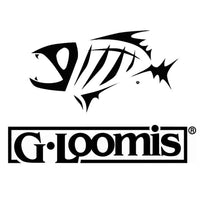Fly Fishing Glossary
It's easy to forget, after you have been fly fishing for a while, how complicated it seems at the outset. Fly fishing comes with its own vocabulary, much of which is not obvious. Here is some information that will help. This list is a work in progress that will be modified and added to on a regular basis.
- Albright Knot - Created in the 1950's by legendary Keys guide, Jimmy Albright, this knot is a good choice for connection materials that differ in diameter and/or consistency. It is often used in fly fishing to tie a thin piece of monofilament to either a thicker piece of bite tippet or to wire. It also functions well to attach the backing to the back of the fly line and the leader to the front of the fly line.
- Arbor - The open part of the reel onto which the backing, fly line and leader are wound.
- Backing - A relatively strong "cord" that is attached directly to a fly reel and is wound on underneath the line. It serves primarily to "back up" the fly line, when a fish pulls out more than the length of the fly line. It also serves to fill up the spool to allow for a quicker retrieve when reeling in line as well as less fly line memory, since the coils will be larger. The most common backing is a braided Dacron material. Gel-spun is sometimes used if extra strength or extra length is needed. Saltwater reels typically hold at least 150 yards of standard Dacron backing.
- Bimini Twist - A knot used in big game fishing that maintains 100% of the strength of the original material. The end result is a single strand of material on one end and a doubled strand of the same material on the other end.
- Bite Tippet - A heavy piece of bite-resistant/abrasion-resistant material tied to the end of the class tippet. The fly is tied directly to the bite tippet. This enables the angler to target fish with sharp teeth and gill plates and abrasive mouths and skin that would quickly wear through the lighter class tippet. The most popular type of bite tippet is fluorocarbon. Hard monofilament is often used as well. Also called Shock Tippet.
- Blood Knot - A popular knot for attaching together monofilament of similar diameters and physical properties. This knot is often used to build and repair leaders and is well worth taking the time to learn. Most anglers first use it to add more tippet to a leader. It is a relatively trim knot that slips smoothly through line guides.
- Casting Arc - Refers to the a path the rod tip takes through the air during a cast. At its basic level, a cast is completed by moving the rod on a pivot point, near where your hand is holding onto the grip. The tip of the rod moves in a much wider "arc," from back to front with the forward cast, then front to back with the back cast. A short cast requires a narrow arc, while a longer cast, with more energy, requires a wider arc.
- Casting Loop - With a good standard fly cast, the fly line rolls off of the tip of the rod in a loop that propagates down the fly line and into the leader until the line and leader are straight.
- Casting Stroke - Motion of the fly rod, either forward or backward, that serves to move the fly line, leader, and fly through the air.
- Class Tippet - A term commonly used in big game fishing, the class tippet is the weakest link in the leader. It is typically at the fly end of the leader, attached to a "bite tippet" to which the fly is tied. This setup allows for a weaker breakaway section while allowing the angler to use a heavy bite tippet to keep fish with sharp teeth or abrasive mouths from breaking off.
- Dacron - Polyester fibers from which backing is woven.
- Drag - Reel drag is a mechanism which provides resistance to line leaving the reel. On reels intended for larger species, the drag can be set, usually with a rotating knob. The drag serves primarily to provide controlled pressure against whatever fish you are fighting to allow you to tire it out as quickly as possible.
- False Cast - A cast during which the fly line and fly remain airborne. False casts are used primarily to lengthen the amount of line in the air and to delay the delivery cast.
- Ferrules - Defined by Merriam-Webster as " a ring or cap usually of metal put around a slender shaft (such as a cane or a tool handle) to strengthen it or prevent splitting." In fly fishing, a ferrule is the connection point between sections of a multi-piece rod. Ferrules need to be strong enough to prevent splitting and flexible enough to maintain the consistent flex of the rod.
- Fluorocarbon - Refers to single strand (monofilament) fluorocarbon material, made from a fluoropolymer, that is used in fly fishing leaders. A fluoropolymer is a compound containing carbon and fluorine. Another common fluoropolymer is Teflon. Fluorocarbon is denser and more abrasion resistant than nylon monofilament and has a lower refractive index (bends light less), making it much less visible to fish.
- Full Wells Grip - A rod grip with a raised "pommel" on each end, lower areas on the top and bottom and a raised area in the middle. Though we haven't validated this, it seems that the grip was originally designed by Henry Wells, of the UK, in the 1800's. Typically used on rods for larger species. This type of grip provides excellent control over the rod, both during the cast and while fighting fish.
- Gel-Spun - An exceptionally strong polyethylene fiber sometimes used as backing. Also referred to as braid or Spectra®, which is a specific product manufactured by Honeywell. Gel-spun backing is a good choice when extra strength or extra backing capacity is needed.
- Grains - An old unit of measurement (having to do with the actual weight of a particular number and type of food grain) that is used in determining the "weight" of fly lines. Equivalent to 0.065 grams.
- Ground Cast - A practice technique where the plane of the cast is moved from close to vertical to completely horizontal. By letting the line fall to the ground after each forward cast and back cast, it is easy to deconstruct the cast and see what can be improved.
- Half Wells Grip - An offshoot of the "Full Wells" grip, the Half Wells is characterized by a raised ridge in the back, just in front of the reel, and again in the middle of the grip. From there the grip tapers towards the front.
- Hemostats/Hemocuts - Hemostats (also called "forceps") are a scissor-like tool with gripping pads at the end. Commonly used in surgery, they are very useful for removing a fly from a fish's mouth. Hemocuts are simply hemostats with scissors behind the jaws.
- Hook Keeper - A small loop of metal between the rod grip and the first line guide that provides the angler with a place to hook a fly when not fishing. Superficially resembles a line guide but is much smaller and offset from the line guides.
- Huffnagle Knot - Useful for attaching a heavy shock leader to a class tippet. Before the Huffnagle can be tied, a Bimini Twist must be tied in the end of the class tippet.
- Improved Clinch Knot - A popular tight-to-the-eye knot, used for attaching flies to the tippet.
- Large Arbor - Related to the how far the open portion of the reel spool, onto which backing, line and leader are wound, is pushed away from the center of the reel. In a standard arbor reel, the arbor starts very close to the center of the reel. In a large arbor reel, the open portion is pushed further towards the outside of the reel. If all the other measurements are identical, a large arbor reel will hold far less backing than a standard arbor reel. In practice, large arbor reels have a much larger diameter than their standard arbor precursors, giving a much quicker retrieve, less line memory, and a more consistent drag as line and backing are pulled off by large fish.
- Leader - A tapered section of monofilament, connected to the end of the fly line, to which the fly is attached. The leader starts with a thick butt section, attached to the fly line, tapers to a thinner midsection, and then down to the thinnest segment, the tippet. A fly is then tied onto the tippet or, in some cases, a heavier wire, fluorocarbon or hard nylon bite tippet. Leaders average 9 feet in length.
- Leader Midsection - The middle section of the leader, between the thick butt section and the thinner tippet.
- Leader Butt Section - The thickest section of the leader, which is attached to the fly line.
- Line Hand - The hand used to manage the fly line while casting, stripping line etc.
- Loading The Rod - Bending the rod, which stores energy for the next portion of the cast.
- Loop To Loop Connection - A quick, easy connection commonly used to connect backing to fly line and fly line to leader. To attach a new leader, with a loop in the butt end, to the loop in the front of a fly line, push the leader loop part of the way through the fly line loop and, starting from the thin end, thread the leader through the part of the leader loop sticking out of the fly line. When you pull it tight, make sure the connection is well seated (tightened) and even. The fly line loop and leader loop should wrap around each other in roughly the same shape.
- Monofilament - Literally a single filament. Refers to nylon monofilament line, of which leaders are typically made.
- Nail Knot - A constricting knot where one material tightens down on another. Can be used for attaching backing to the back end of a fly line or the butt end of a leader to the front of a fly line. The name comes from a common method of tying the knot, which uses a nail.
- Nippers - Small cutters used to cut monofilament and fluorocarbon. Superficially resembles nail clippers but cuts knot tag ends much closer and allows for more precise cuts.
- O'Clock - When sight fishing, directions are often indicated in time format (1 O'clock to 12 O'clock) with 12:00 being straight off the bow and 6:00 directly behind the boat. This allows the guide to quickly provide precise information on where a fish can be found. Often combined with a distance. For example, "Look 10:30 at 40', moving left to right." This same terminology is also used when instructing fly casting to indicate the angle of the fly rod up from horizontal. In this case, the rod is at 9:00 when horizontal in front of the caster, and at 12:00 when pointing straight up. Further explanation of O'clock related to casting can be found in our "First Cast to First Fish" section.
- Perfection Loop - An in-line loop knot (a loop that comes straight out the end of the material it is tied in) that is often used in the butt ends of leader and is also useful for tying flies to heavy shock tippet. Because of its relatively low strength, it is best used in thicker material with a higher breaking strength.
- Polarization - Polarization, as applied to polarized sunglasses, cuts out reflected light from the water and other reflective surfaces, allowing you to see into the water much more easily.
- Presentation Cast - The final portion of the fly cast where the line and fly are allowed to fall to the water, as opposed to a false cast, where the line and fly are kept in the air.
- Reel Foot - The projection coming off of a reel, shaped a little like two feet going in opposite directions, which is used to attach the reel to the reel seat of a fly rod.
- Reel Seat - The part of a fly rod to which a reel is attached. Consists of a stationary hood, into which one end of the reel foot slides, and a sliding ring, with a matching hood, that is screwed up over the other side of the reel foot. An up-locking reel will have the stationary hood on the handle side with the locking ring pushing the reel towards the tip of the rod. A down-locking reel seat will push the reel into a stationary hood on the butt end of the rod. Most rods, with the exception of some very small and specialty rods, use up-locking reel seats.
- Rod Butt - The thick end of the rod, extending behind the reel. Most rods for larger species will have a "fighting butt" that extends several inches behind the reel.
- Fighting Butt - An extension of the rod behind the reel seat that gives the angler a bracing point. This will provide better control over the rod and result in less fatigue when fighting larger fish.
- Rod Hand - The hand used to hold the rod while casting.
- Rod Tip - The thin end of the rod onto which the "tip-top", the final line guide, is attached.
- Roll Cast - A single direction cast (it does not require a back cast) that uses the surface tension of the water, instead of a back cast, to load the rod. Useful in many situations, such as fishing small streams, straightening your line before picking up your line off of the water, or getting the line airborne at the beginning of a regular overhead cast.
- Sealed Drag - Refers to a reel drag that is sealed from the elements. This type of drag tends to be heavier than open drags but requires no service and is ideal if your reel will be used in dirty/sandy environments or will be submerged regularly in salt water.
- Shooting Line - Allowing extra line to "shoot" out the tip of the rod on your presentation cast. For example, you may hold 35 feet of line and leader in the air on your back cast then shoot an additional 15 feet of line for a 50 foot cast.
- Shock Tippet - See Bite Tippet
- Single Foot Line Guide - An alternative to the snake guide, the single foot line guide has only one foot that needs to be wrapped down to the rod blank.
- Slipping Line - Line can be lengthened during a false cast by letting the extra energy in the line pull some additional line out before the next casting stroke. This is distinct from shooting line, which happens only on the presentation cast.
- Snake Guide - A curved line guide, shaped something like an elongated snake's coil. Snake guides have a foot in front and behind that are wrapped down to the rod blank.
- Strip - Stripping line is pulling the line through the rod back towards you. Stripping is done to give motion to a fly in the water, to set the hook, and to simply retrieve line.
- Strip Strike - A solid strip intended to set the hook in a fish's mouth. A strip strike is most effective when the rod starts out pointed towards the fish and is often followed by sweeping the rod tip back away from to fish to put a bend in the rod.
- Stripping Guide - A heavy duty line guide, usually with an insert that helps the line slide through smoothly, that the fly line first threads into when leaving the reel. Most larger rods, especially those intended for saltwater use, will have two stripping guides.
- Surgeon’s Knot - A useful knot for tying two pieces of nylon monofilament and/or fluorocarbon together. Essentially a double overhand knot. Can be tied in a bight (a piece of material folded back over itself) to form a loop. Often used to tie tippet onto the end of the leader.
- Tailing Loop - Ideally when a loop rolls off the tip of your rod and moves towards the target, the leg of the loop closer to the fly, which is unrolling towards the target, will be above the portion which is extending from the tip of the fly rod and has already unrolled. A tailing loop occurs when the end of the loop that is unrolling drops below the part of the line that has already unrolled. This often results in a tangled leader and missed opportunities at fish.
- Tip-Top - The final line guide at the very tip of a fly rod. While the lower guides are wrapped onto the rod, the tip top slides over the very end of the rod and is glued in place.
- Leader Tippet - The thinnest piece of the leader, to which the fly is usually tied. The tippet is the portion that should break when a fish breaks your line or you get a fly caught in a tree. Sometimes a "bite tippet" is added between the tippet and fly when targeting fish with abrasive mouths or cutting teeth. In this case, the tippet may be termed a "class tippet."
- Turn Over - During a presentation cast the line rolls off of the rod tip in a loop that propagates towards the target, with the line straightening behind it. As the loop nears the end, the leader and fly "turn over," as the final little bit of energy in the cast rolls them through the loop and straightens them out. If the cast is done incorrectly or without enough energy, the leader may not turn over. Instead of rolling over and landing straight, it may end up in a pile.
- Unloading The Rod - A rod that is bent, or "loaded", during a cast has energy stored for the next portion of the cast. This "unbending", which puts the energy back in the fly line as is propelled off of the rod tip in the opposite direction of the bend, is termed "unloading."
- Weight - A term used to designate the size of a fly line and matching fly rod. The practical use of the "weight" is to match an appropriate fly line to a rod and to choose equipment sized correctly for your intended use. A designated line weight is related to the actual weight, in grains, of the first 30 feet of a fly line.














